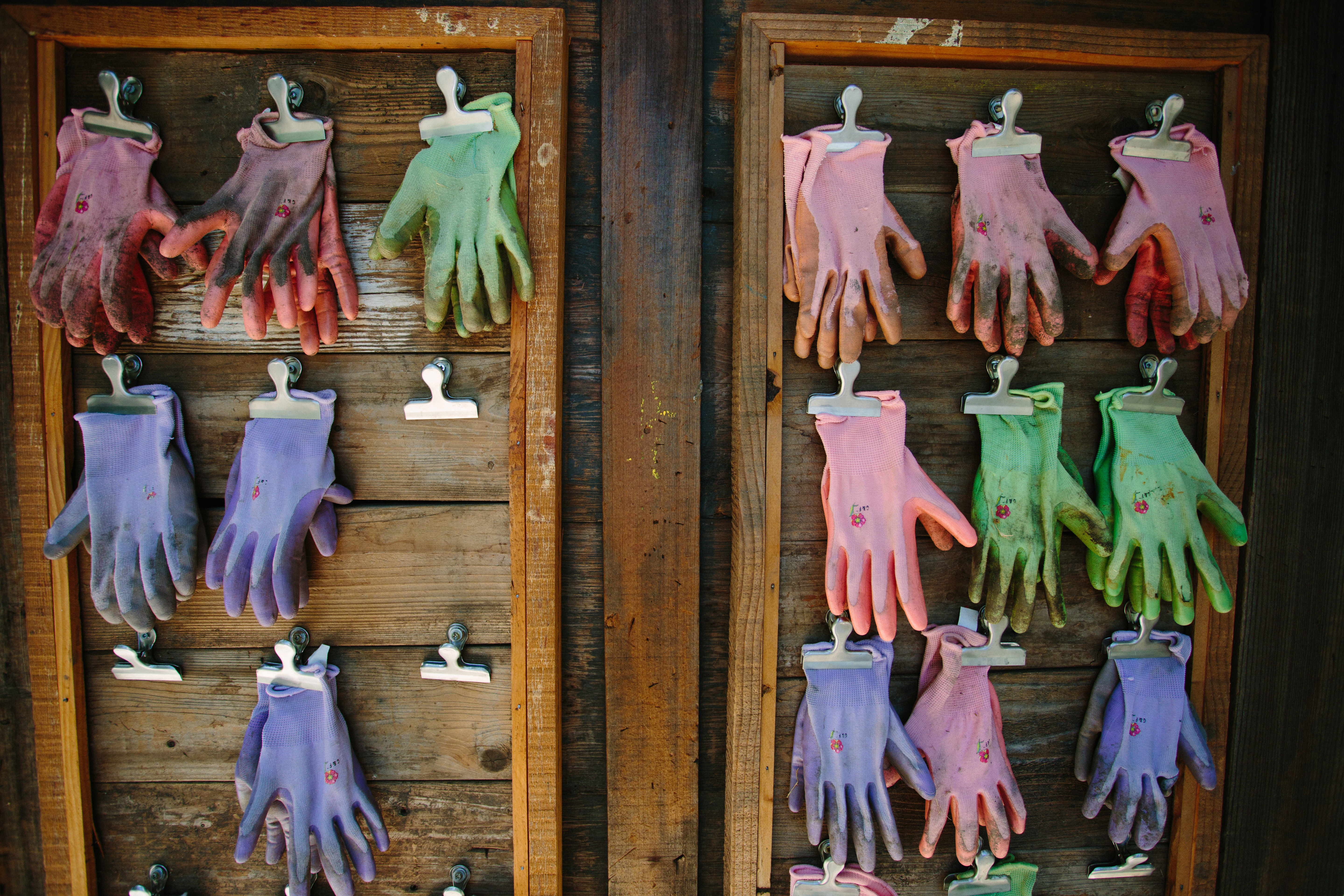In the garden, we have established the following rituals and routines so that students know what to do when they come to garden class. Students:
- Arrive quietly to the Ramada and take a seat, ready for opening circle
- Can reference the job board for the lesson of the day, garden jobs, and the closing circle activity.
- Hear brief descriptions of each garden job on the board from garden teachers.
- Choose the right tool for the right job from the tool shed.
- Know the ring of the cowbell signifies that they should:
- Clean and put back tools in the tool shed (tools with red tape outside, tools with yellow tape inside).
- Head back to the Ramada for closing circle.
- Participate in tastings:
- Wait until everyone is served.
- 6th grade: Share his/her name and a description of the tasting based on the five senses.
- 7th and 8th grade: Share his/her name and create a simile about the tasting using the five senses.





